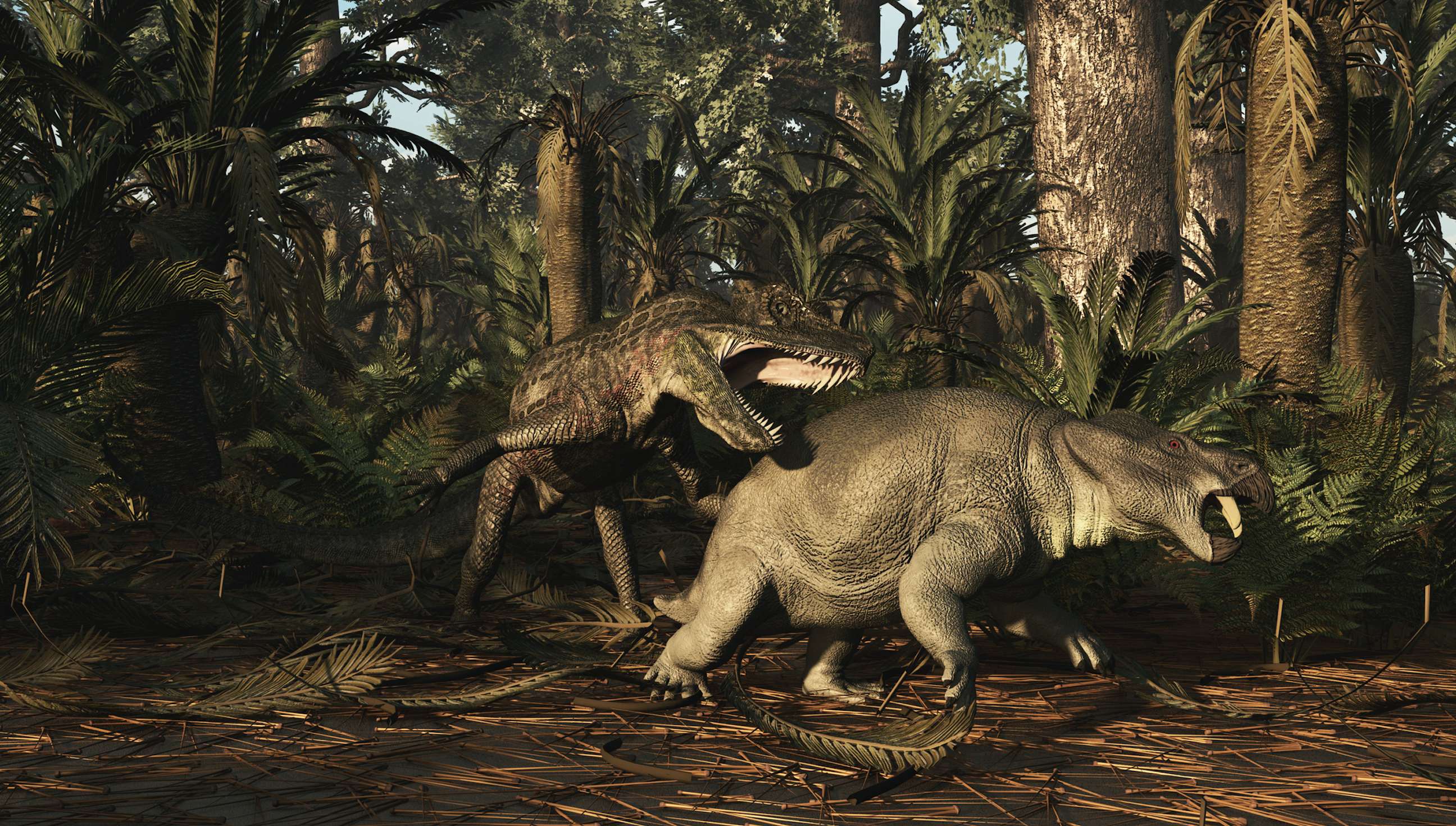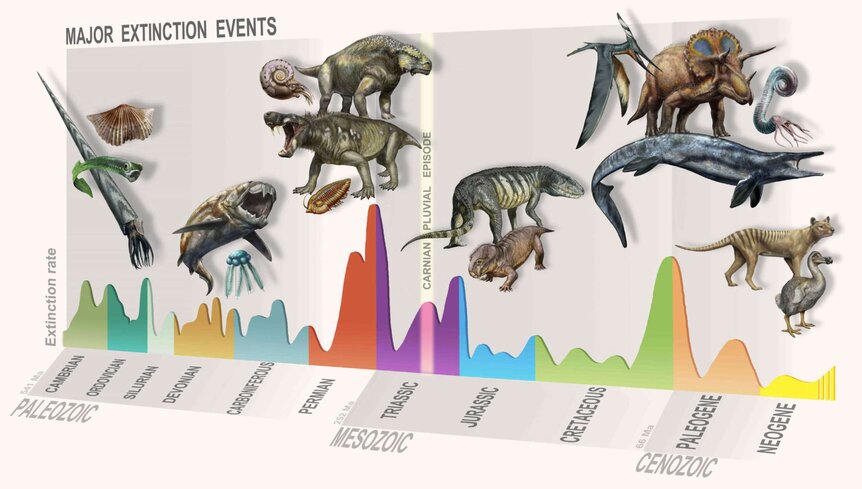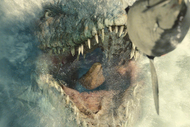Create a free profile to get unlimited access to exclusive videos, sweepstakes, and more!
Scientists determine explosive new mass extinction event 232 million years ago

Mass extinction events on our planet have only occurred a handful of times in the 540 million years since life began. Most people are familiar with the Cretaceous-tertiary Extinction that occurred some 65 million years ago that led to the demise of the dinosaurs and 50 percent of all plants and animals, as well as the Permian-triassic Extinction 250 million years ago that wiped out 95 percent of all species.
But now scientists have reconsidered the impact of The Carnian Pluvial Episode, a significant climate change event that took place approximately 234 to 232 million years ago (Late Triassic epoch) that led to the age of the dinosaurs, examining it with renewed interest to understand the consequence of severe global environmental changes and extensive volcanism.
In a new research paper published in the online journal Science Advances and submitted by the University of Bristol’s Dr. Mike Benton and Dr. Jacopo Dal Corso from the China University of Geosciences at Wuhan, the scientists scrutinized all the geological and paleontological evidence and made a significant conclusion as to what had caused this cataclysm.
In their exploration of the chaotic event, a fresh analysis of the paleontological data indicates that The Carnian Pluvial Episode was a major — and previously ignored — period of mass extinction. It might be linked to the vanishing of up to a third of all marine genera (invertebrates, vertebrates, and protists) including numerous tetrapods, and to the explosive diversification of many important modern groups of plants and animals like conifers, insects, dinosaurs, crocodiles, lizards, turtles, and mammals.
Violent volcanic eruptions in the Wrangellia Province of western Canada are the smoking gun and the most likely cause of the devastation and sudden climatic shift, when abundant volumes of hot volcanic basalt were poured out to form much of what is now the western coast of North America.
“The eruptions peaked in the Carnian,” Dr. Dal Corso said. “I was studying the geochemical signature of the eruptions a few years ago and identified some massive effects on the atmosphere worldwide. The eruptions were so huge, they pumped vast amounts of greenhouse gases like carbon dioxide, and there were spikes of global warming.”
These humid warming periods lasting a total of one million years were accompanied by an intense spike in global rainfall, as discovered back in the '80s by geologists Mike Simms and Alastair Ruffell. This gradual climate alteration is reflected in the major biodiversity loss in the ocean and on land.
However, following the extinction event, diverse new groups flourished to produce more modern-like ecosystems. These climate changes were beneficial to the sustained growth of plant life, especially the expansion of conifer forests.
“The new floras probably provided slim pickings for the surviving herbivorous reptiles,”explained Professor Benton. “We now know that dinosaurs originated some 20 million years before this event, but they remained quite rare and unimportant until the Carnian Pluvial Episode hit. It was the sudden arid conditions after the humid episode that gave dinosaurs their chance.”
These more hospitable conditions not only allowed dinosaurs to rise, but also a proliferation of modern groups of plants and animals including some early turtles, crocodiles, lizards, and the first mammals. The Carnian Pluvial Episode's effect on ocean life must also be considered as it marks the beginning of modern-style coral reefs and numerous groups of plankton, which all points to historic changes in ocean chemistry and the carbonate cycle.
“So far, paleontologists had identified five big mass extinctions in the past 500 million years of the history of life,” Dr. Dal Corso said. “Each of these had a profound effect on the evolution of the Earth and of life. We have identified another great extinction event, and it evidently had a major role in helping to reset life on land and in the oceans, marking the origins of modern ecosystems.”















